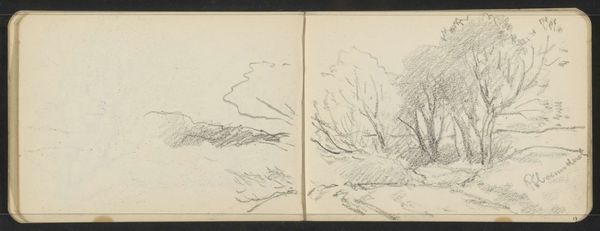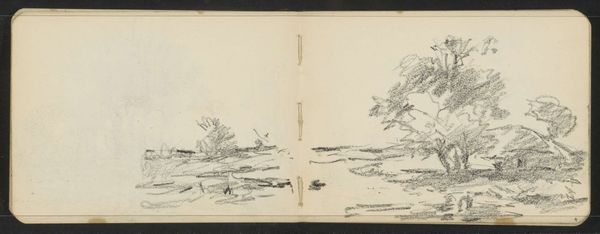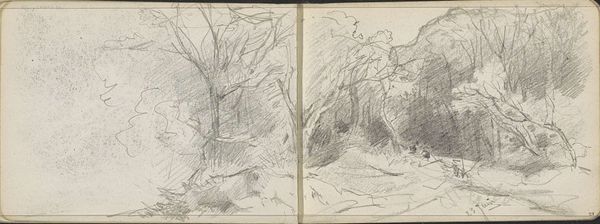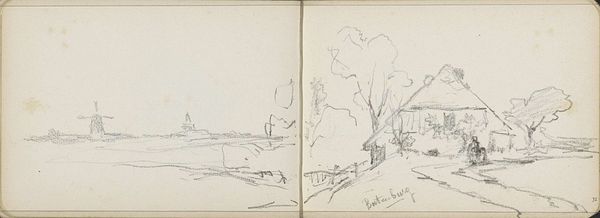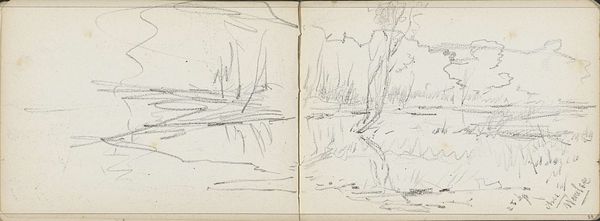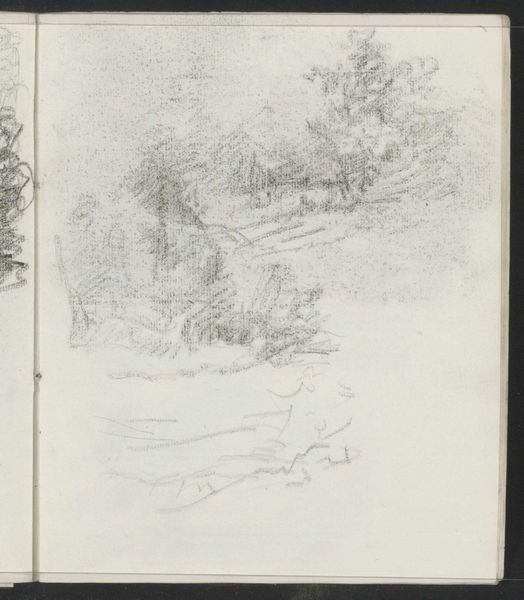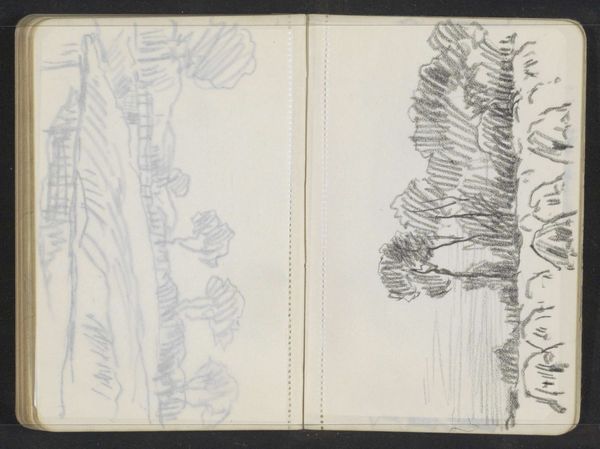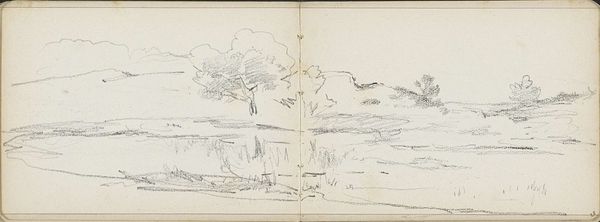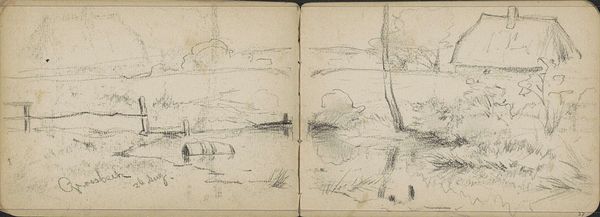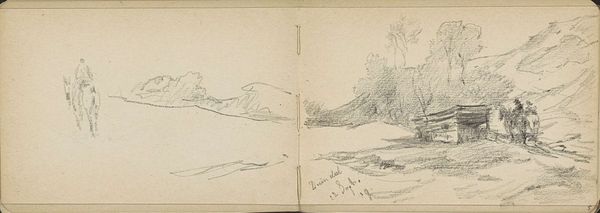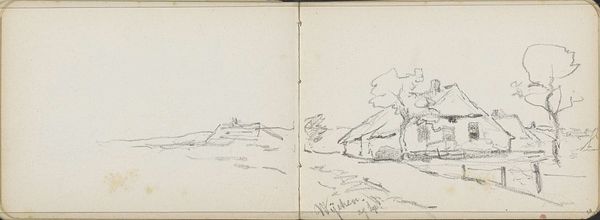
drawing, pencil
#
drawing
#
quirky sketch
#
pen sketch
#
sketch book
#
landscape
#
personal sketchbook
#
sketchwork
#
ink drawing experimentation
#
pen-ink sketch
#
pencil
#
pen work
#
sketchbook drawing
#
sketchbook art
#
realism
Copyright: Rijks Museum: Open Domain
Curator: This charming sketch is titled "Trekpaard voor een kar en een landschap met een brug," or "Horse pulling a cart and a landscape with a bridge" in English. Willem Cornelis Rip created this drawing sometime between 1866 and 1922. Editor: It’s funny; the first thing I notice is how unresolved it feels, almost as though the artist got distracted midway. The horse and cart have a real presence, but then the landscape feels... tentative. Curator: I see what you mean. The drawing uses both pencil and ink, which speaks to its nature as a sketchbook piece. It has that raw, immediate feel, like a fleeting moment captured on paper. There’s a casual intimacy to witnessing the artist's process. Editor: I think what strikes me most is how these seemingly ordinary scenes become sites where the everyday struggles and beauty of rural life are rendered. It asks me to think about the role of working animals like this horse within the societal framework and about labor practices, visibility, and exploitation, even. It’s interesting to contemplate this representation within the context of its creation. Curator: Absolutely, and I find myself wondering about Rip's perspective, about what this scene meant to him. Was it purely observational, a study of form and light? Or was there some deeper connection, perhaps even an affection, for this humble working animal in the landscape? The bridge in the background almost becomes a symbol, perhaps alluding to transitions. It evokes a simpler time but perhaps too simple of a time when you consider our relationship to the land and to work, wouldn't you say? Editor: I couldn’t agree more. It reflects a tension between celebrating rural life and, without judgment, implicating that same life within broader structures of power. We bring so much to its viewing that it’s impossible for it to solely exist for simple beauty. Curator: In the end, this humble sketchbook page offers much more than a mere snapshot. It invites us to consider our place within these interconnected landscapes, too, literally as we are standing in a gallery but also socio-economically. Editor: Right, this deceptively simple sketch opens onto very complicated ideas.
Comments
No comments
Be the first to comment and join the conversation on the ultimate creative platform.
